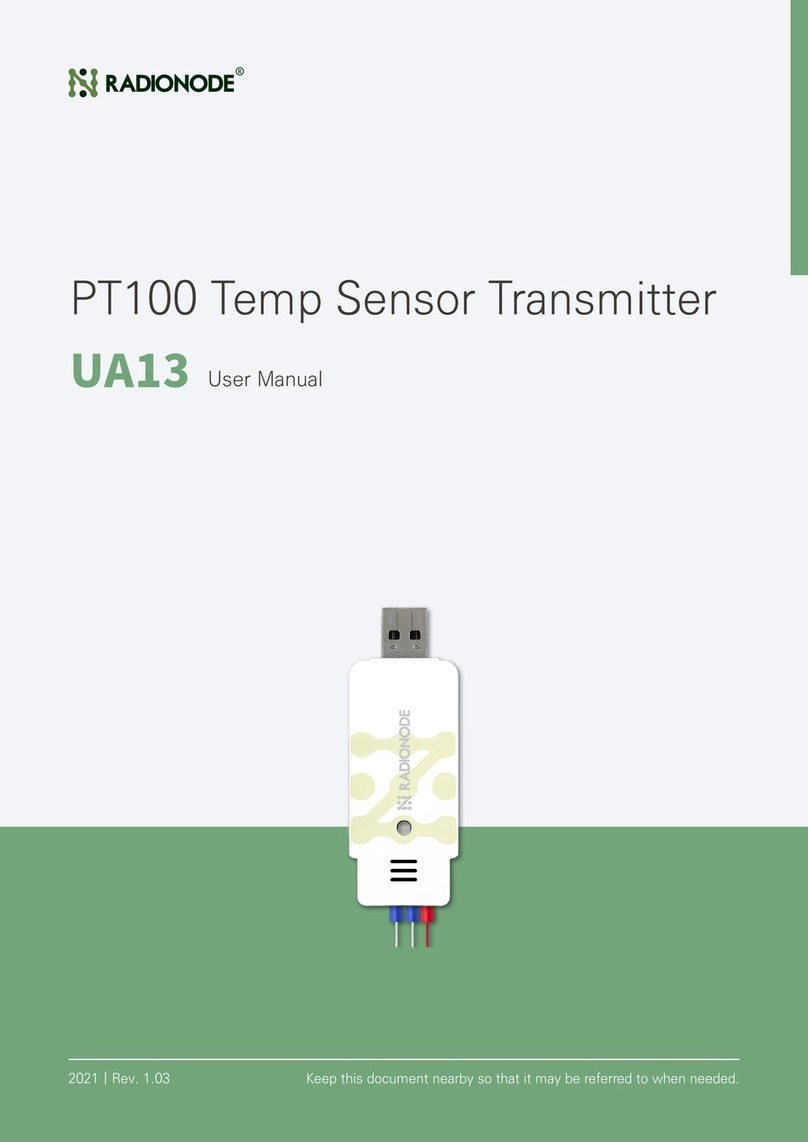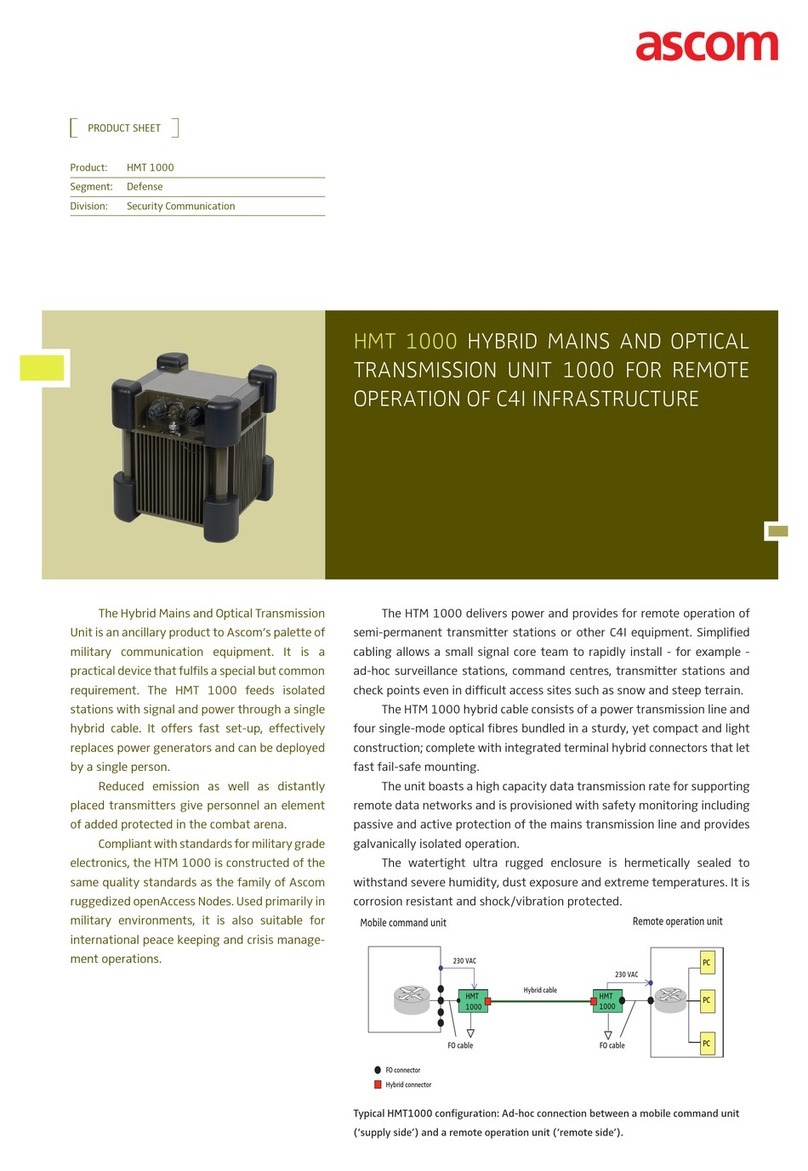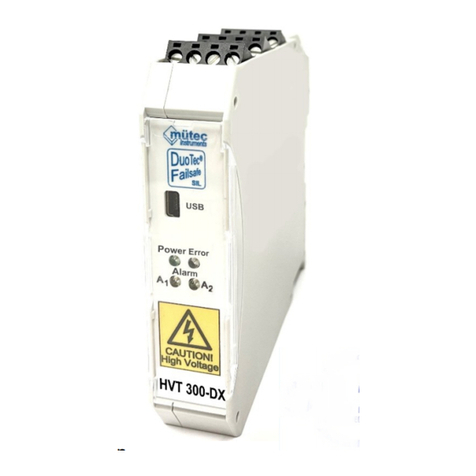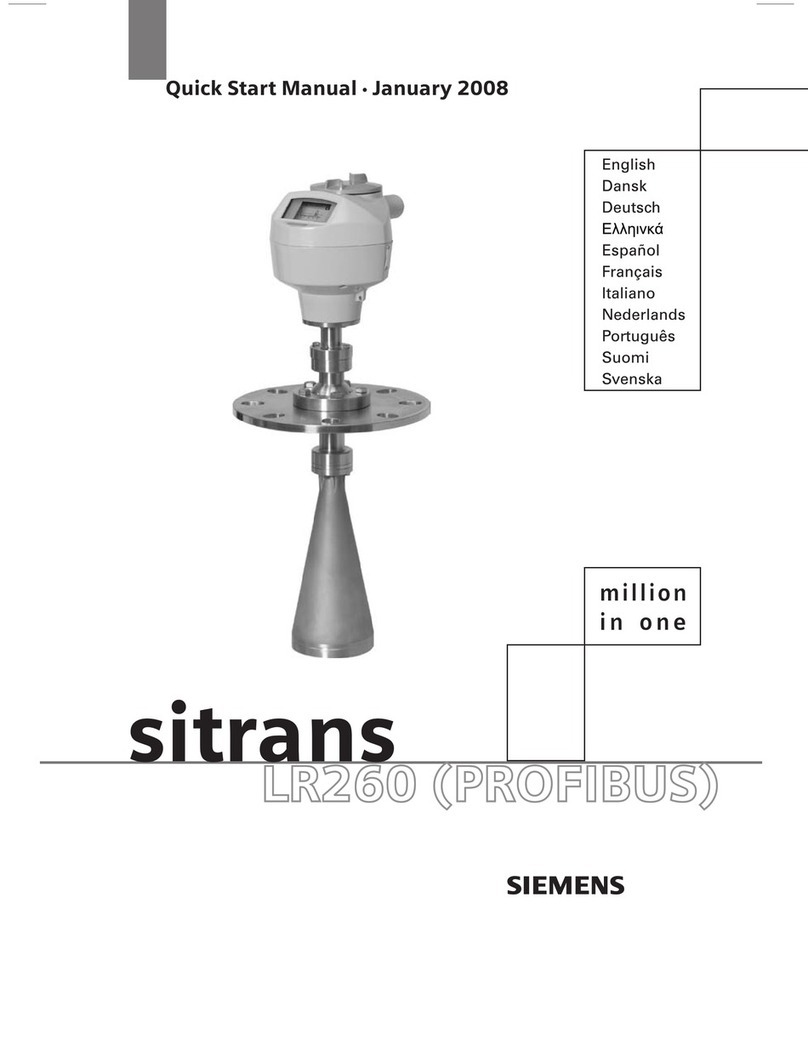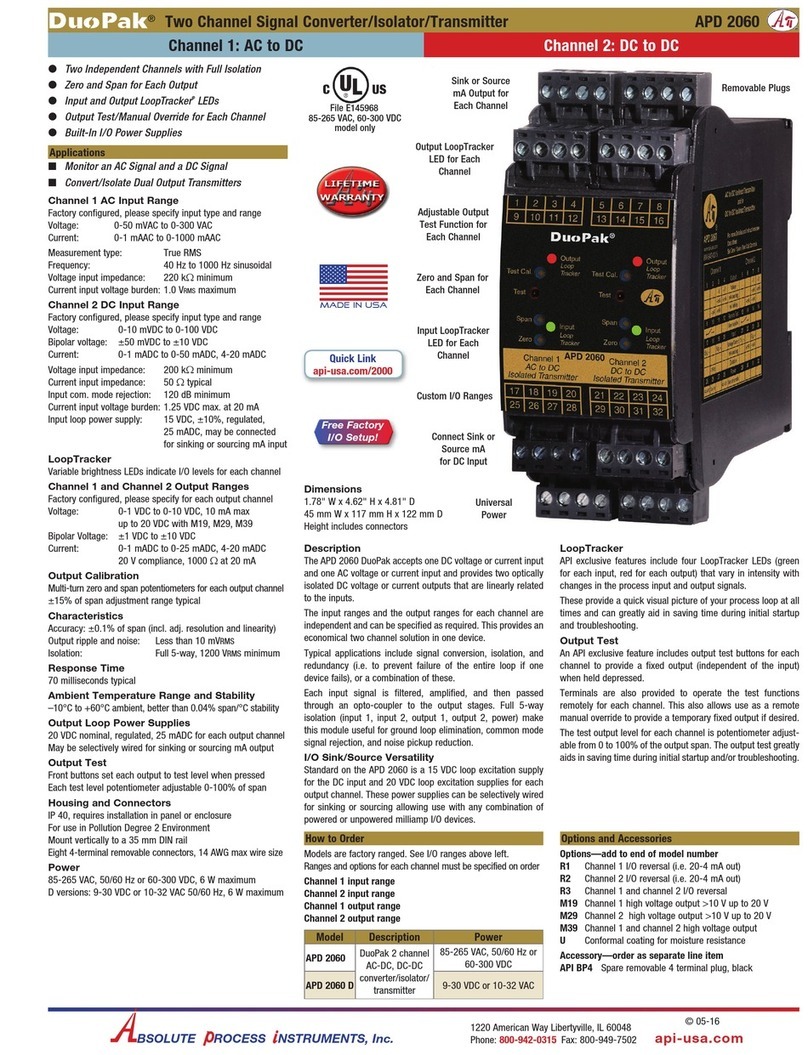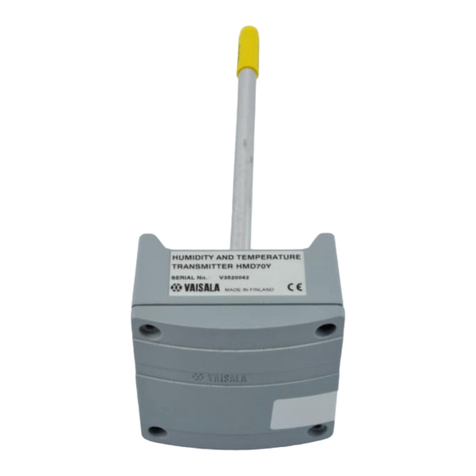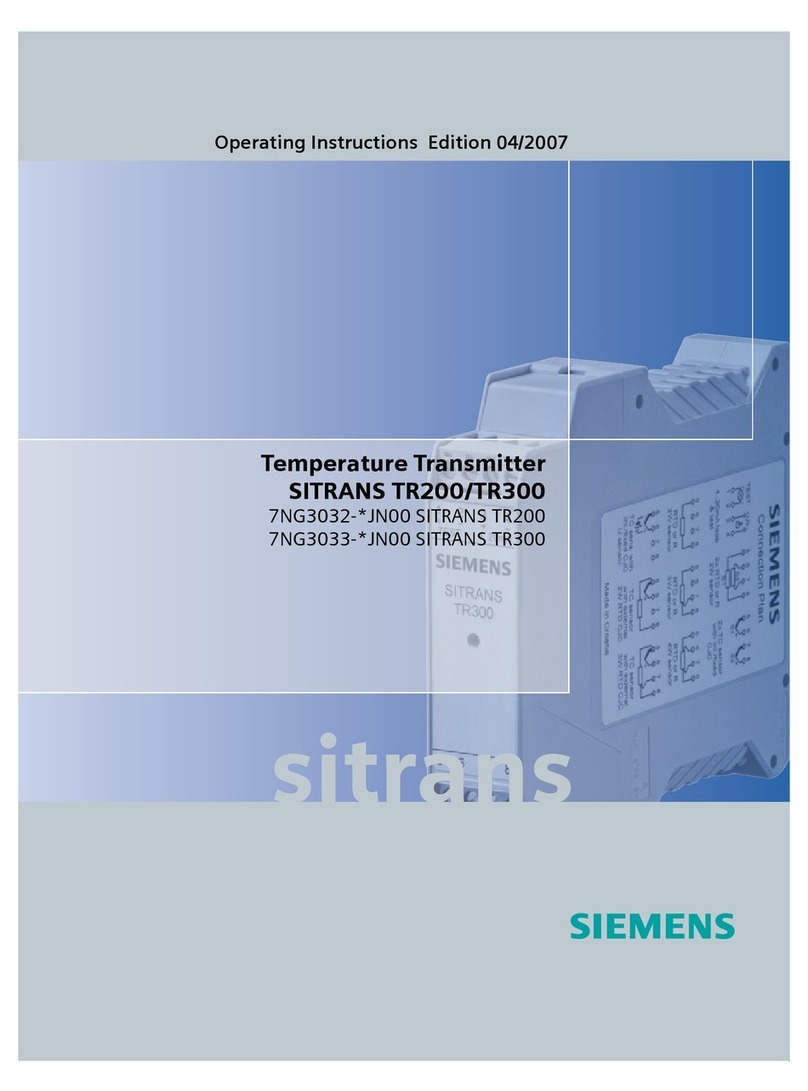Silent Gliss SG 10303 User manual

18202.1101/0711 DE/EN
Hand-held radio transmitter SG 10303
867 MHz
868 MHz
915 MHz
0682
Operating instructions (translation)

2
Contents
Safety instructions . . . . . . . . . . . . . . . . . . . . . . . . . . . 3
Safety instructions for radio operation . . . . . . . . . . . 4
Intended use . . . . . . . . . . . . . . . . . . . . . . . . . . . . . . . . 4
Exclusion of liability . . . . . . . . . . . . . . . . . . . . . . . . . . 5
Scope of supply. . . . . . . . . . . . . . . . . . . . . . . . . . . . . . 5
Technical data . . . . . . . . . . . . . . . . . . . . . . . . . . . . . . . 5
Mounting of wall bracket . . . . . . . . . . . . . . . . . . . . . . 6
Device explanation . . . . . . . . . . . . . . . . . . . . . . . . . . . 7
Explanation of functions. . . . . . . . . . . . . . . . . . . . . . . 8
Bidirectional radio system. . . . . . . . . . . . . . . . . . . . . 8
Unidirectional radio system. . . . . . . . . . . . . . . . . . . . 8
Initial operation . . . . . . . . . . . . . . . . . . . . . . . . . . . . . 8
Factory settings. . . . . . . . . . . . . . . . . . . . . . . . . . . . . 9
PROGRAM menu . . . . . . . . . . . . . . . . . . . . . . . . . . 11
ADMINISTRATION menu . . . . . . . . . . . . . . . . . . . . 12
SETTINGS Menu . . . . . . . . . . . . . . . . . . . . . . . . . . 13
Settings for specific channels . . . . . . . . . . . . . . . . . 15
FUNCTION menu . . . . . . . . . . . . . . . . . . . . . . . . . . 16
Programming the transmitter . . . . . . . . . . . . . . . . . 16
Programming additional transmitters . . . . . . . . . . . 17
Stopping programming mode (bidirectional) in the
transmitter. . . . . . . . . . . . . . . . . . . . . . . . . . . . . . . . 19
Approaching end positions . . . . . . . . . . . . . . . . . . . 19
Battery replacement . . . . . . . . . . . . . . . . . . . . . . . . . 22
Cleaning . . . . . . . . . . . . . . . . . . . . . . . . . . . . . . . . . . . 22
Disposal . . . . . . . . . . . . . . . . . . . . . . . . . . . . . . . . . . . 22
Towns for the selection. . . . . . . . . . . . . . . . . . . . . . . 22
Troubleshooting . . . . . . . . . . . . . . . . . . . . . . . . . . . . 25
Repair 26
EC Declaration of conformity. . . . . . . . . . . . . . . . . . 27
Silent Gliss International . . . . . . . . . . . . . . . . . . . . . 28
Contents

3
Safety instructions
The instructions must be observed in order to
ensure the product can be operated smoothly and
safely and its properties can be fully realised.
• The operator/user must have completely read and understood
the instructions.
• The operator must ensure that the instructions are available to
the user in a legible form.
• The operator must ensure that all safety measures are observed
and complied with.
• The following safety and assembly instructions apply to the
device and not to the accessories and drive.
CAUTION!
Failure to observe these can cause physical
injury!
Observe all safety instructions.
• Never install or take into operation devices which are damaged.
• Only use unmodified and compatible original parts.
• If the device is opened without permission or used in an improper
manner, or if it is incorrectly installed or operated, there is a risk
of injury to persons and damage to property.
• The device contains small parts which can be swallowed.
Transport
• Should you receive the device in a damaged condition despite
proper packaging, you must not put it into operation. Complain
about any damage to the transport company immediately.
Installation
• Observe the regulations during installation.
Safet
y
instructions

4
Operation
• Use only in dry rooms.
• If one or more transmitters are used for controlling the system, its
operating range must stay visible during operation.
• Keep control systems out of the reach of children and the
disabled.
• Dispose of used batteries properly.
Safety instructions for radio operation
Observe all safety instructions for radio operation.
Only use radio systems which are approved and can be operated
without interference.
• Radio systems must not be operated in areas where there is an
increased risk of interference (e.g. hospitals, airports).
• The remote control is only approved for devices and systems for
which any malfunction of the transmitter or receiver would not
result in a risk for persons, animals or property, or if such a risk is
covered by other safety equipment.
• The operator has no protection whatsoever against interference
by other telecommunication installations and local terminals (e.g.
also from radio installations which are operated properly in the
same frequency range).
• The range of the radio signal is limited by legislation and the
structural conditions.
Intended use
The SG 10303 hand-held radio transmitter is a multi-channel
transmitter. It can be used unidirectionally or bidirectionally.
The hand-held transmitter must only be used for the control
of Silent Gliss shading systems which are equipped with the
Safet
y
instructions for radio operation

5
corresponding radio receivers. Other use, or use beyond this is not
considered to be use for intended purpose.
The hand-held transmitter is referred to as "device" in this manual.
Exclusion of liability
Silent Gliss assumes no liability for personal injuries, property
damage and financial losses which arise from use other than
mentioned above, modifi cations to the device, improper use and
failure to observe the operating instructions. Liability for material
defects is excluded in such cases.
Scope of supply
Hand-held radio transmitter SG 10303 (batteries included in the
device), wall bracket, 2 wall plugs, 2 screws.
Technical data
Name of device Hand-held radio transmitter
SG 10303
Operating voltage 3 V DC
Battery type 2 x LR06 (AA Mignon)
IP Code IP 20
Temperature range 0 to +55 °C
Radio frequency 867/868 MHz frequency band
Dimensions in mm (hand-held trans-
mitter)
L 150 x W 51 x H 26
Weight in grams (including batteries) 140
There are different regulations for the USA, Canada, Australia and
some countries in South America.
Radio frequency 915 MHz frequency band
E
xclusion of liabilit
y

6
Mounting of wall bracket
• The wall bracket must be fixed so
that the drill holes do not touch
any electrical cables.
• Before installing the unit in the
required position, check that
the transmitter and receiver are
functioning perfectly.
• Attach the bracket to the wall
with the wall plugs and screws
provided.
The top part of the wall bracket can be
moved.
M
ountin
g
of wall bracke
t

7
Device explanation
Front of device
1 Display
2 Left menu button
3 Right menu button
4 Joystick
5 Operating mode indicator
6 OPEN button
7 STOP button
8 Status indicator
9 CLOSE button
10 Select button
Back of device
11
11 Learn button P
D
evice ex
p
lanation

8
Explanation of functions
Bidirectional radio system
A bidirectional radio system transmits radio signals to a radio
receiver and enables feedback from the radio receiver to the
transmitter. The radio signal can be sent directly to the target
receiver. If this is not possible then the radio signal is forwarded via
other bidirectional participants until the signal reaches the target
receiver. The target receiver carries out the command and sends a
confi rmation back to the transmitter.
Bidirectional radio operation is only possible if all participants are
bidirectional. Otherwise, the system is only unidirectional.
Unidirectional radio system
A unidirectional radio system transmits radio signals to radio
receivers. However, in contrast to the bidirectional radio system,
the radio receivers cannot send back a reply to the transmitter. The
transmission of radio signals from radio receiver to radio receiver is
also not possible.
Initial operation
Press a button to switch on the hand-held transmitter and illuminate
the display, status display and operating mode display. The hand-
held transmitter is in automatic mode during initial operation.
Note
Do not press the P button until the receivers are in
programming mode. The active channel for a radio system is
decided during the programming. If the receivers are not in
programming mode, the channel of the sender changes to the
unidirectional mode. In order to restore the starting condition,
press the STOP and Pbuttons simultaneously for 6 seconds
until the status display lights.
Select the required language by navigating the menu during
initial operation.

9
Factory settings
Program
Individual
Off (Individual switching time every
day)
Open 07:00 / Sat + Sun 08:00
Close 20:00
Astro
On
Lock time opening 06:30 / Sat + Sun 08:00
Lock time closing --:-- (off)
Astro evening
Off
Open 07:00/08:00 (as for “Individual”)
Lock time closing --:-- (as for “Astro”)
Settings
Holiday Off
Astro offset Morning +0:00 min
Evening +0:30 min
Language German
Lighting (display) On
SU/WI time On
Program position ↓End position (for switching command
CLOSE
)
Program position ↑End position (for switching command
OPEN
)
Priority Off (automatic switching commands
not prioritised)
Shading Off (automatic shading system not
deactivated with automatic timed
switching command
CLOSE
)
Product selection Roller shutter
E
x
p
lanation of functions

10
Date/Time
Program
Administration
Settings
Function
Holiday
Factory setting
Lighting
Intermediate position 1
(in secs)
Intermediate position 2
(in 0.1 seconds)
Program – Position ↓
Language
Astro
Astro
Individual
Version
Channels
Rooms
Groups
Reset
Summer/winter time
Channel selection
Product selection Product-specific transmitter configuration for
shades (not for groups and central channel)
Priority Priority automatic commands On/Off
Astro evening Astro mode closing
Menu structure
Shading Activate auto shading for clock On/Off
Channel settings
Select town
Latitude/longitude
Astro offset
Program – Position ↑
Setting travel on
time switching command UP
Town selection by geographic data
with continental assignment for astro function
Freely selectable input of geographic data
Latitude, longitude and UTC for astro function
Switching time off All day switching times switched off in the channel
Individual switching times
Astro mode switching times
Channel-specific allocations
Room-specific allocations
Group allocations
Reset all allocations and names
Holiday mode On/Off
Setting a travel time to intermediate position
Default setting “- - : - -” for use of
intermediate position 1 in the receiver (see page 22)
Setting a travel time to desired
position. Default setting “- - : - -” for use of
intermediate position 2 in the receiver (see page 22)
Setting travel on
time switching command DOWN
Shift astro time for opening and closing
Language selection
Display lighting On/Off
Set summer/winter time changeover to automatic,
manual or changeover disabled
Reset all settings to factory settings
(without changing channel assignment)
Version details
Explanation of functions
planation of functions
M tt

11
Note
If the hand-held transmitter is in the menu mode and the
buttons are not pressed for longer than 30 seconds, the menu
is automatically changed back to operating mode without
saving the changes.
DATE/TIME menu
Setting the date and time. Using the automatic switching commands
requires a current setting.
PROGRAM menu
Once you have selected the channel, you
can set different switching times:
• Individual (each day can be selected)
• Astro (each day can be selected), set
ON at the factory
• Astro evening (each day can be
selected)
The selection of the switching or lock times
assigned to days is performed using the
activation of the days of the week using the
joystick ( open/close).
Switching time
example:
All switching times can also be deactivated per channel for all
days, display "–:–" for deactivated switching times.
Note
It is not possible to select different switching times for specific
channels for several unidirectional function channels (switching
time applies to all unidirectional channels).
Individual
Automatic open and close movements at the set times and days.
Change Back
Switching times channel 4
07:25
Mo Tu We Th Fr Sa Su
20:15
E
x
p
lanation of functions

12
Astro
Controls the open and close movement according to Astro function
in accordance with the sunrise and sunset times. Programmable
lock times prevent open and close movements occurring too soon.
A switching time adapted to the local conditions for the open and
close movements can be achieved using input of the geographic
data by selection of a town or inputting longitude and latitude. This
can be supplemented with an individual Astro offset (see settings).
Astro evening
This controls the open movement according to the set switching
time and the close movement according to the Astro function. The
programmable lock time prevents close movement using the Astro
function occurring too soon.
A switching time adapted to the local conditions for the close
movements can be achieved by inputting the geographic data
according to town selection or input of longitude and latitude and
individual Astro offset (see settings).
Lock time
This prevents open or close movement using the Astro function
occurring too soon. Changing lock times: "Program" menu, select
channel, Astro evening (or Astro), select "Change", select days by
moving joystick completely to the right, change lock times, save.
ADMINISTRATION menu
You can select channels, rooms and groups and set their names
and assignments. Selecting the menu item “Reset" enables all the
designations to be restored to the factory settings.
Channels
You can allocate a selected channel to a room or group
(bidirectional channels only). You can change the designation
individually for the selected channel. The channel's position in the
list can be moved for the operating mode.
E
x
p
lanation of functions

13
Rooms
Once you have designated individual rooms, you can allocate
channels or groups to selected rooms and change the room
designations. However, no functions can be assigned.
Groups
You can select two groups, allocate individual channels or rooms to
them and change their group designation.
Note
Group allocation is only available if at least 2 bidirectional
radio channels exist. Group allocation is not possible for
unidirectional channels.
SETTINGS Menu
Adjusting the functions as required.
Global settings
Settings for holidays, Astro, language, lighting and Summer/Winter
time apply to all channels.
Holiday
The holiday function simulates an occupied house while you are on
holiday. If this function is active, all the programmed switching times
are delayed by 0-30 minutes at random.
Astro
When the Astro menu is selected, the input of a town or the direct
input of longitude and latitude with UTC and a defined Astro offset
of the switching time are available for adapting the Astro switching
times according to geographic data or individual requirements.
Town selection
It is possible to select a town using the geographic data. The towns
are sorted by continent. The continents are selected by moving the
joystick sideways; a town is selected by moving the joystick up or
E
x
p
lanation of functions

14
down. The town of Kassel for Germany is set at the factory. See the
"Towns for selection" chapter for selectable towns.
Longitude / latitude
The direct input of geographic data for the Astro function is possible
using the "Longitude", "Latitude" and "UTC" input fi elds. When
a town is selected, the geographic data of the selected town are
displayed. If data are entered directly which are different from the
town-related coordinates, the previous selection of the town is
cancelled.
Astro offset
Individual or local adjustment of the Astro switching times with
the option of offsetting the opening and/or closing time by up to a
maximum of ± 120 minutes.
Language
You can select the language of the menu texts from a list:
• German
• Spanish
• Dutch
• Polish
• English
• Italian
• Swedish
• French
• Portuguese
• Danish
Lighting
Switching the display background lighting on and off.
This is switched off automatically if no button is pressed for 5
seconds. The lighting function is switched on at the factory.
Su/Wi Time
Su/Wi designates the automatic Summer/Winter time changeover.
The automatic changeover is activated at the factory; the timer
adjusts automatically.
In the menu, you can select between an automatic Summer / Winter
time changeover in accordance with country-specific rules or a
manual Summer time changeover for areas without defined rules
for the Summer time. Automatic Summer time changeover is not
E
x
p
lanation of functions

15
available in these areas. Both changeover types can be deactivated
with resetting to the local standard time.
An activated Summer time is indicated in the function bar of the
display with "DST" (daylight saving time).
Note
If the automatic Summer time changeover cannot be selected,
a possibly necessary manual Summer time setting must
always be made using the "Su/Wi time" menu in order to
prevent unwanted switching time offsets of the Astro function
(closing and opening too soon).
Settings for specific channels
The following settings apply to each channel.
After a channel has been selected, a function specific to a product
group can be assigned to it.
Select the Shade menu from the Product Selection menu of Silent
Gliss Systems.
Any transmitted command activates the receiver immediately, which
then switches off in the end position.
Program position
Once you have selected a channel, you can determine the way an
automatic closing command is carried out (if the timed switching
function for the channel is activated).
You can set a common program position for unidirectional channels.
End position System moves to bottom end position
Intermediate posi-
tion 1
System moves to intermediate position 1
Intermediate posi-
tion 2
System moves to intermediate position 2
Close command switches off the automatic shading system (privacy
protection). A time-controlled opening command switches on the
E
x
p
lanation of functions

16
automatic shading system again. The shading setting must be set to
"Automatic ON".
The shading setting is set to “Automatic OFF” at the factory.
The activated automatic shading system is indicated in the function
bar of the display by an "S".
In unidirectional channels only a common setting is possible.
FUNCTION menu
Factory setting
Resets all settings except the receiver assignments linked to
channels to the factory settings. All the initial operation steps must
then be carried out.
During the initial commissioning, the following must be set using the
automatic menu guidance: "Language setting" -> "Town selection"
-> "Date/time".
Version
Indication of the current fi rmware version.
Programming the transmitter
Requirement
The receiver is installed. Check whether the channel is deleted or
in the correct mode according to the status display.
Stand in front of the blind to be programmed for the programming.
1. With electrical receivers which have already been installed,
switch the fuse off, and on again a few seconds later.
The receiver is now in programming mode for about 5 minutes.
2. Press the programming button P on the back of the device briefly
(approx. 1 second) until the status display lights for a short time.
E
x
p
lanation of functions

17
The blind moves up and down for approx. two minutes, showing
that the receiver is in programming mode.
3. Press the OPEN button as soon as the blind starts moving in
Open direction (within 1 second at the most). The status display
lights briefly.
The blind stops briefl y, starts moving again, stops and then
moves in the Close direction.
4. Immediately (within maximum 1 second) after starting close
travel, press the CLOSE button. The status display lights briefly.
The blind stops. The transmitter channel is programmed.
Note
If the blind does not stop, it must be programmed again.
A bidirectional programming process in the hand-held
transmitter can be cancelled by pressing the STOP button for
6 seconds.
Programming additional transmitters
Note
If several receivers are connected to the same feed line,
then all are simultaneously in programming mode for approx. 5
minutes after switching on the mains power.
If the Pbutton on the transmitter is now pressed, all the
receivers start programming mode at the same time
( open/ close movements). Randomly different intervals between
open / close movements cause the receivers to become offset
against one another. The longer programming is delayed, the
greater the offset will be.
The short open/ close movements can be stopped by pressing
the STOP button briefly on a transmitter which has already
been programmed. The programming mode in the receiver is
interrupted.
E
x
p
lanation of functions

18
The transmitter can now be assigned without having to
disconnect individual receivers. If the blind moves in the wrong
direction, delete the transmitter and program it again.
(→see Deletion of transmitter)
For programming additional transmitters to one receiver:
1. Press the OPEN, CLOSE buttons and the programming button P
(back of device) simultaneously (for 3 seconds) on a transmitter
which has already been programmed to the receiver. The status
display lights briefl y. The receiver is now in programming mode.
2. Press the programming button Pon the transmitter to be
programmed until the status display lights briefl y. The receiver is
now in programming mode (up/ close movements).
3. Press the OPEN button as soon as the blind starts moving in
Open direction (within 1 second at the most). The status display
lights briefly. The blind stops briefl y, starts moving again and
then moves downwards.
4. Immediately (within maximum 1 second) after starting close
travel, press the CLOSE button. The status display lights briefly.
The blind stops. The transmitter channel is programmed.
If more than 10 bidirectional receivers are being programmed at the
same time, the transmitter channel in programming mode switches
to group mode. The group mode is indicated by fast flashing with
pauses.
Programming in group mode is completed after a 2-minute pause or
pressing the STOP button for 6 seconds.
5. Press the CLOSE button and the programming button P (back of
device) simultaneously . The status display fl ashes. The receivers
are now in programming mode.
6. For bidirectional operation only: press the programming button
Pon the transmitter to be programmed until the status display
lights briefl y. The receivers are now in programming mode
( open/ close movements).
7. Press the OPEN button as soon as the blind starts moving in
open direction (within 1 second at the most). The status display
E
x
p
lanation of functions

19
lights briefly. The blinds stop briefl y, start moving again, stop and
then move downwards.
8. Immediately (within maximum 1 second) after starting close
travel, press the CLOSE button. The status display lights briefly.
The blinds stop moving. The transmitter channel is programmed.
Stopping programming mode (bidirectional) in the
transmitter
Press the STOP button for at least 6 seconds until the status
display lights orange.
Approaching end positions
Requirement
The transmitter/transmitter channel is programmed. The end
positions of the drive have been set.
Approaching "Closed" end position
Press the CLOSE button briefly. The blind closes completely.
Approaching "Open" end position
Press the OPEN button briefly. The blind opens.
Programming the intermediate position 1 in the receiver
Requirement
The transmitter/transmitter channel is programmed. The end
positions of the drive have been set. The blind is in the open end
position.
Option: Press and hold the STOP and then also the CLOSE
buttons for 3 seconds to change to the “20 series 867/868/915”
slow travel mode. The drive remains in the slow travel mode until
teaching in of intermediate position 1 is concluded.
E
x
p
lanation of functions

20
1. Move the blind to the required position using the CLOSE button.
In doing so, keep the CLOSE button pressed.
2. Also press the STOP- button. The blind stops. The status display
lights briefly.
The intermediate position 1 is programmed.
Programming the Intermediate position 2 in the receiver
Requirement
The transmitter/transmitter channel is programmed. The end
positions of the drive have been set. The blind is at its "closed" end
position.
Option: Press and hold the STOP and then also the OPEN buttons
for 3 seconds to change to the “20 series 867/868/915” slow travel
mode. The drive remains in the slow travel mode until teaching in of
intermediate position 2 is concluded.
1. Move the blind to the required position using the OPEN button.
Keep the OPEN button pressed during the movement.
2. Also press the STOP button. The blind stops. The status display
lights briefly.
The intermediate position 2 is programmed.
Approaching intermediate position 1
Requirement
The transmitter/transmitter channel is programmed. The blind is at
its upper end position.
1. Press the CLOSE button twice briefly. The status display lights
briefly.
2. The blind travels to the stored intermediate position. If no
intermediate position has been programmed, the blind moves to
the "closed" end position.
E
x
p
lanation of functions
Table of contents
Other Silent Gliss Transmitter manuals
Popular Transmitter manuals by other brands
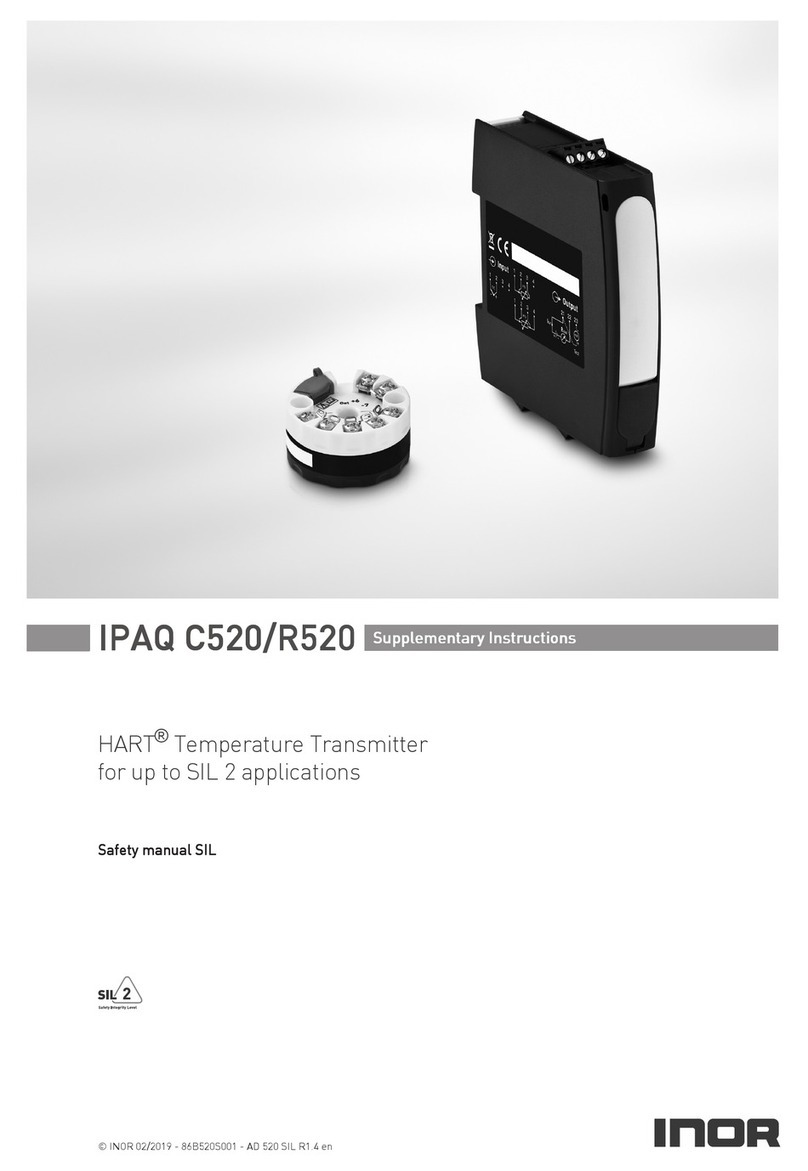
INOR
INOR IPAQ C520 Supplementary instructions
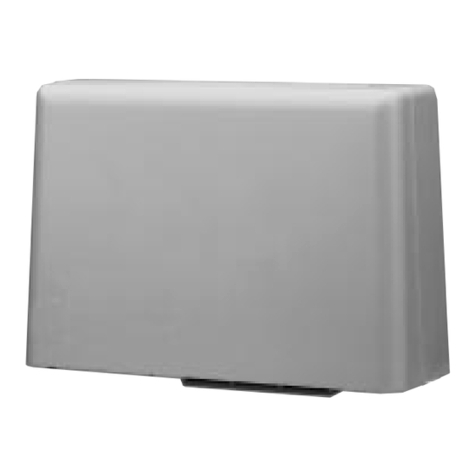
Monacor
Monacor AV-5820TX Mounting instructions

Hama
Hama AT-802 Operating instruction
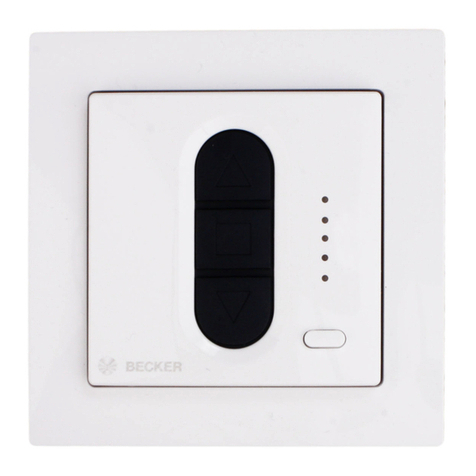
Becker
Becker Centronic / B-Tronic EasyControl EC715 Assembly and operating instructions

DMP Electronics
DMP Electronics 1102 installation guide
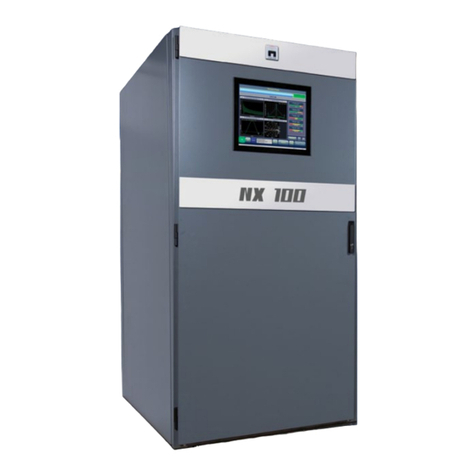
Nautel
Nautel NX100 troubleshooting manual




